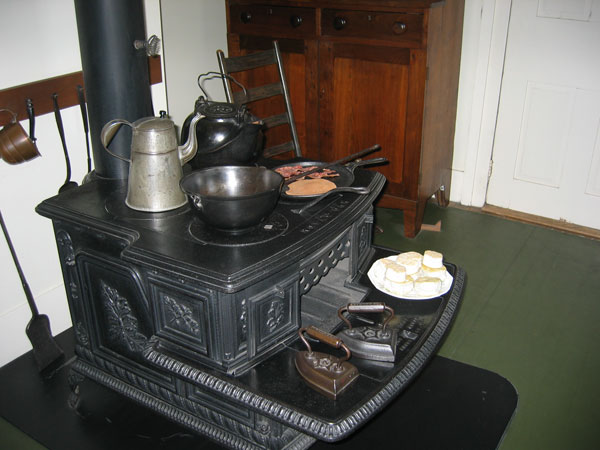Elizabeth Garraux, the central figure of my novel, “When He Was Gone,” became well-known for being a great cook during the late 1800s in Greenville. A newspaper article even mentioned the tantalizing smells of freshly baked bread, and meats slow-roasted in brown sugar and spices coming from her kitchen.
So, what was cooking and dining really like in the decades just after the Civil War? Most people, unless they were traveling, found restaurant dining too pricey, so a majority of food products were raised, processed, and prepared at home, including meat.
A typical menu at a relatively cheap restaurant in the mid-19th century included boiled mutton with oyster sauce, roast beef with lima beans, pig’s feet in batter, or beefsteak with onions, each entre for .10 cents. If you were splurging, you could order a porterhouse steak for .25 cents. But remember, in 1876, an average hourly wage was .14 cents an hour. The average salary in 1890 for laborers in industry, trade and transportation was $545 a year. Going out to dinner with a family as large as Elizabeth’s with 11 children, would have been very extravagant.
Elizabeth would have had a metal cookstove in the kitchen, but the heat source would still have been wood or coal. It wasn’t until 1908 that three companies in the US began selling electric stoves, but even then, sales and public acceptance developed slowly.

She likely had an icebox to help store perishable food. The boxes were made of wood and lined with tin or zinc. A large block of ice was delivered by an iceman who made daily delivery rounds. Customers would leave a card in the window letting him know if they wanted a 25-, 50-, 75- or 100-pound block.
Elizabeth probably preserved most of their homegrown food with alternative methods including salting, drying and canning. There’s no doubt though, that her love of gardening, fresh foods and cooking led her to start one of her businesses – a fresh food and flower market in downtown Greenville, where Blaze Pizza is now located.
When looking back, it’s hard not to be appreciative of all the modern conveniences we all enjoy, and impossible not to respect the homemakers who did it all the hard way.
(“When He Was Gone” is currently in the hands of two publishers and one agent. Working hard to try to get it into the hands of all you great supporters! Fingers crossed.)
